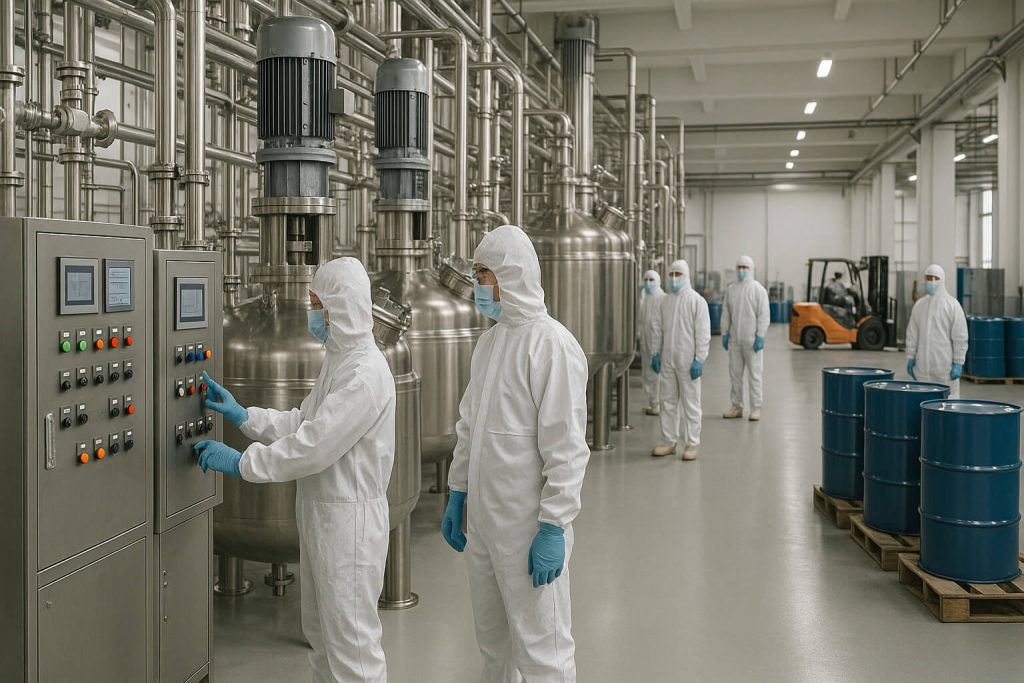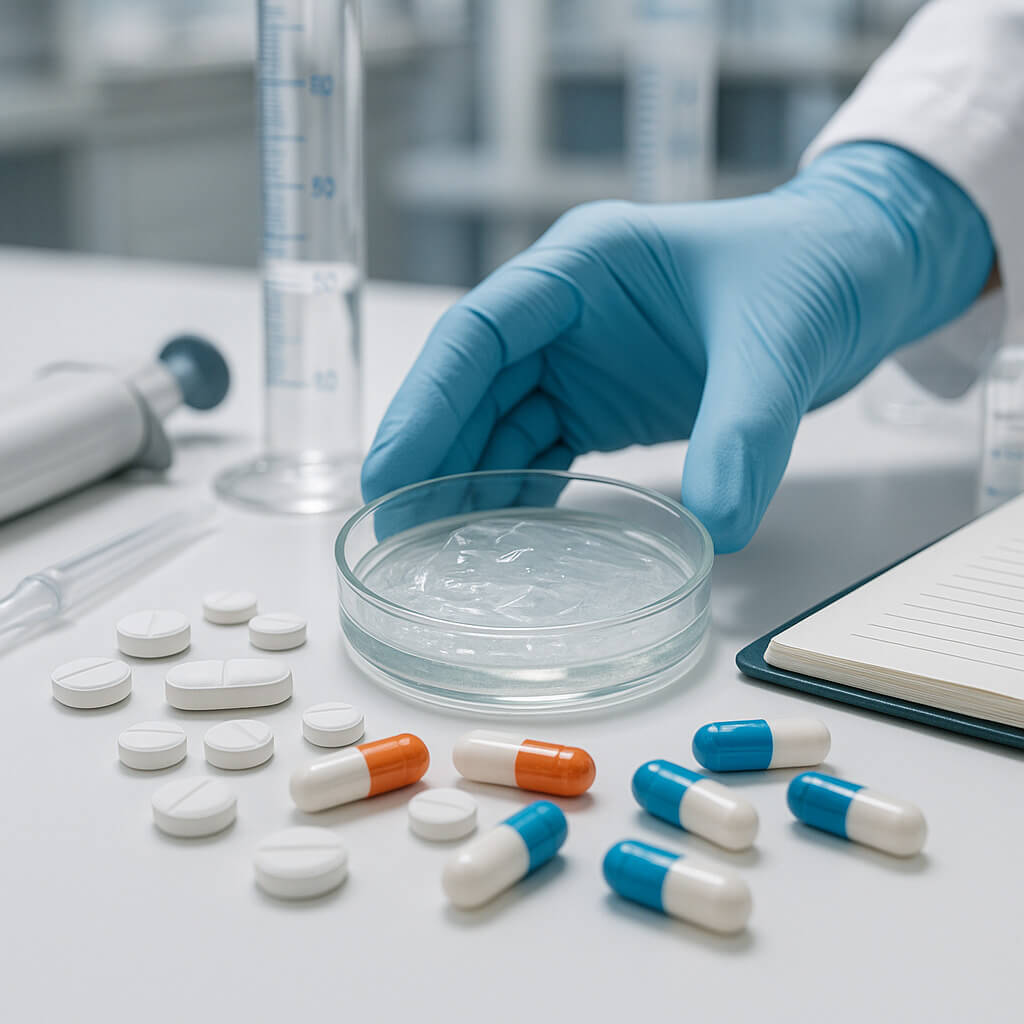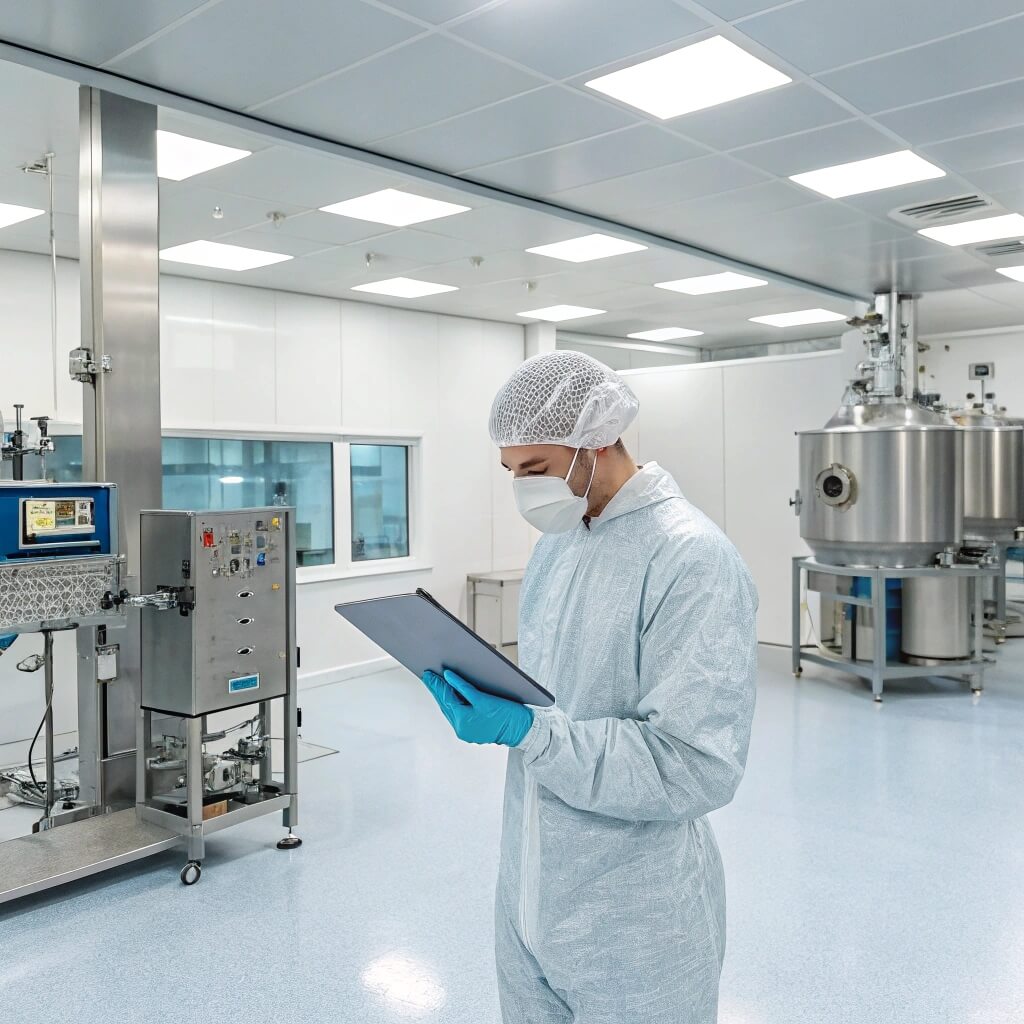The hydroxypropyl methylcellulose (HPMC) market continues to grow as industries from construction to pharmaceuticals seek reliable suppliers. For purchasing managers and procurement specialists, finding trustworthy HPMC wholesalers in China can be challenging despite the country’s dominance in production. This article identifies the top 10 HPMC wholesalers in China, providing you with essential information about supplier evaluation, product specifications, and import procedures. With our comprehensive guide, you’ll gain the knowledge needed to make informed purchasing decisions and establish beneficial supplier relationships in the Chinese HPMC market.

1. What Makes China a Leading Source for HPMC Supply?
China has established itself as the global powerhouse for HPMC production, accounting for over 60% of worldwide manufacturing capacity. This dominance stems from several key factors that position Chinese suppliers as preferred partners for international buyers.
Here’s the truth: China’s HPMC industry has undergone remarkable transformation over the past decade, evolving from basic production to sophisticated manufacturing with stringent quality controls.
The scale of China’s HPMC manufacturing is impressive, with annual production exceeding 400,000 metric tons. Major industrial clusters are concentrated in Shandong, Jiangsu, and Hebei provinces, where specialized chemical industrial parks provide infrastructure advantages and regulatory support.
Chinese HPMC manufacturers have made significant strides in quality certification. Most reputable wholesalers now hold international certifications including ISO 9001, ISO 14001, and industry-specific certifications like USP, EP, and JP for pharmaceutical-grade products.
| Fattore | China’s Advantage | Global Comparison |
|---|---|---|
| Capacità produttiva | 400,000+ metric tons annually | 60% of global supply |
| Manufacturing Clusters | Shandong, Jiangsu, Hebei | Highest concentration globally |
| Certificazioni di qualità | ISO, USP, EP, JP, FDA, CE | Matches international standards |
| Price Range (Industrial) | $2.50-$4.00/kg | 15-30% lower than competitors |
The cost advantages of sourcing HPMC from China remain compelling despite rising labor costs. Chinese manufacturers maintain competitive pricing through economies of scale, vertical integration, and continuous process optimization. Typical pricing for industrial-grade HPMC ranges from $2.50-$4.00 per kilogram, while pharmaceutical and food grades command $4.00-$7.00 per kilogram—representing savings of 15-30% compared to Western or Japanese alternatives.
2. How Do You Evaluate and Select a Reliable HPMC Wholesaler?
Selecting the right HPMC wholesaler requires systematic evaluation based on multiple criteria. The difference between a reliable supplier and a problematic one can significantly impact your product quality, delivery timelines, and overall business operations.
Want to know the secret? The most successful procurement specialists develop a structured evaluation framework that weighs both objective credentials and subjective factors like communication responsiveness.
Essential criteria for assessing HPMC wholesaler reliability begin with business legitimacy. Verify the supplier’s business license, tax registration, and export license through China’s National Enterprise Credit Information Publicity System. Established wholesalers typically have at least 5-7 years of operating history and maintain registered capital exceeding RMB 5 million.
| Due Diligence Step | Metodo di verifica | Segnali di pericolo da tenere d'occhio |
|---|---|---|
| Business Registration | Sistema nazionale di credito alle imprese | Recent establishment, frequent name changes |
| Production Capability | Facility audit, capacity documentation | Reluctance to share facility information |
| Verifica della certificazione | Direct verification with issuing bodies | Expired certificates, inconsistent scope |
| Riferimenti dei clienti | Direct contact with reference companies | Unwillingness to provide references |
Several red flags should prompt caution when evaluating potential suppliers. These include reluctance to provide samples, inconsistent communication, unusually low pricing compared to market rates, and unwillingness to accept standard payment terms like L/C or T/T with partial payment.
Sample testing represents a crucial step in the evaluation process. Request samples from multiple suppliers and conduct comparative testing for viscosity, substitution rate, particle size, and application-specific performance. Third-party laboratory verification provides objective quality assessment and helps identify suppliers who consistently deliver products meeting your specifications.
3. Which Companies Are the Top 10 HPMC Wholesalers in China?
After extensive market research and industry analysis, we’ve identified the top 10 HPMC wholesalers in China based on production capacity, quality certifications, export volume, and customer satisfaction ratings.
Potresti rimanere sorpreso nell'apprendere that while these companies share the same industry, each has developed unique specializations that make them particularly suitable for specific applications and customer requirements.
- Società per azioni Shandong Head Co., Ltd. – Established in 1995, Head is one of China’s largest cellulose ether manufacturers with an annual production capacity exceeding 60,000 tons. They specialize in construction-grade HPMC and hold ISO 9001, ISO 14001, and CE certifications.
- Anhui Shanhe Pharmaceutical Excipients Co., Ltd. – Founded in 2003, Shanhe focuses on pharmaceutical and food-grade HPMC with USP, EP, and JP certifications. Their 30,000-ton annual capacity facility employs advanced production technology from Germany.
- Hebei Jiahua Cellulose Co., Ltd. – Operating since 1999, Jiahua produces 45,000 tons of cellulose ethers annually, with HPMC representing about 60% of their output. Their products serve construction, pharmaceutical, and food industries.
| Wholesaler | Annual Capacity | Primary Industries | Key Certifications |
|---|---|---|---|
| Capo Shandong | 60,000 tons | Construction, General | ISO 9001, ISO 14001, CE |
| Anhui Shanhe | 30,000 tons | Farmaceutico, Alimentare | USP, EP, JP, ISO 9001 |
| Hebei Jiahua | 45,000 tons | Multiple industries | All industry-specific |
| Shandong Guangda | 40,000 tons | Costruzione | ISO 9001, CE |
| Hopetop Pharmaceutical | 25,000 tons | Farmaceutico | USP, EP, JP |
- Shandong Guangda Cellulose Co., Ltd. – With 25 years in the industry and 40,000 tons annual capacity, Guangda specializes in construction-grade HPMC with excellent water retention properties.
- Hopetop Pharmaceutical Co., Ltd. – Established in 2001, Hopetop focuses exclusively on pharmaceutical-grade HPMC with 25,000 tons annual capacity. Their products meet USP, EP, and JP standards, with specialized grades for controlled-release formulations.
- Lotte Chemical (Jiangsu) Co., Ltd. – A joint venture with Korean investment, Lotte Chemical produces 35,000 tons of high-purity HPMC annually. Their products serve pharmaceutical, food, and personal care applications.
- Henan Tiansheng Chemical Industry Co., Ltd. – Operating since 2005, Tiansheng produces 30,000 tons of HPMC annually, primarily serving construction and coating applications.
- Shandong Yiteng New Material Co., Ltd. – Founded in 2008, Yiteng has grown rapidly to reach 25,000 tons annual capacity. They specialize in food-grade HPMC with FDA and KOSHER certifications.
- Zhejiang Kehong Chemical Co., Ltd. – Established in 2001, Kehong produces 20,000 tons of HPMC annually with a focus on construction applications. They’ve pioneered low-dust HPMC formulations that improve workplace safety.
- Sichuan Ruitai Cellulose Co., Ltd. – A publicly-listed company established in 1991, Ruitai produces 30,000 tons of cellulose ethers annually, including specialized HPMC grades for pharmaceutical and personal care applications.
4. What Are the Different Grades and Specifications of HPMC Available?
HPMC products vary significantly in their specifications and performance characteristics, making it essential to understand the different grades available and their suitability for specific applications.
La realtà è that selecting the wrong HPMC grade can lead to product failures, manufacturing inefficiencies, and increased costs, even when sourcing from a top-tier supplier.
Common HPMC grades are primarily differentiated by viscosity, substitution rate, and particle size. Construction-grade HPMC typically ranges from 15,000 to 200,000 mPa·s in viscosity, while pharmaceutical grades often fall between 3 and 100,000 mPa·s depending on the application.
| Intervallo di viscosità | Applicazioni di costruzione | Applicazioni farmaceutiche | Applicazioni alimentari |
|---|---|---|---|
| Low (3-10,000 mPa·s) | Self-leveling compounds, Grouts | Tablet coating, Liquid suspensions | Salse, condimenti |
| Medium (10,000-50,000 mPa·s) | Tile adhesives, Joint fillers | Tablet binding, Extended release | Bakery products, Ice cream |
| High (50,000-200,000 mPa·s) | Renders, Plasters, EIFS | Matrix tablets, Sustained release | Meat substitutes, Frozen foods |
Viscosity directly impacts product performance across applications. In construction, higher viscosity HPMC provides excellent water retention and sag resistance in mortars and renders. Medium viscosity grades offer balanced workability and water retention for tile adhesives. Lower viscosity types are ideal for self-leveling compounds where flow properties are critical.
Substitution rates and methoxyl content significantly influence HPMC properties. The methoxyl content (typically 19-30%) affects thermal gelation temperature, with higher methoxyl content resulting in lower gelation temperatures. Hydroxypropyl content (typically 4-12%) influences surface activity and organic solubility.
Special formulations have been developed for specific industry requirements:
- Fast-dissolving grades with modified particle structure for rapid incorporation in dry-mix products
- Surface-treated grades with reduced dust formation for improved workplace safety
- Cold-water soluble grades that hydrate without lumping in cold water applications
- Thermally-stable grades with elevated gelation temperatures for hot-process applications
5. How Does the Pricing Structure Work for Bulk HPMC Orders?
Understanding the pricing dynamics for HPMC from Chinese wholesalers is essential for effective procurement planning and negotiation. Price structures can be complex, influenced by multiple factors that vary by supplier and market conditions.
Let me be frank: While base pricing is important, the total cost of ownership—including quality consistency, delivery reliability, and technical support—often provides better long-term value than simply choosing the lowest per-kilogram price.
Several key factors affect HPMC pricing in the Chinese market. Raw material costs, particularly cellulose pulp and propylene oxide, account for approximately 60-70% of production costs and fluctuate based on global commodity markets.
| Grade Type | Fascia di prezzo (USD/kg) | Premium Factors | Discount Potential |
|---|---|---|---|
| Industrial Construction | $2.50-$4.00 | Viscosity, Consistency | 10-20% for volume |
| Grado alimentare | $4.00-$6.00 | Purity, Certifications | 8-15% for volume |
| Farmaceutico | $5.00-$7.00 | Conformità normativa | 5-12% for volume |
| Specialized Formulations | $6.00-$9.00 | Performance Properties | 5-10% for volume |
Volume-based discount structures are standard practice among Chinese HPMC wholesalers. Typical discount tiers might include:
- 5-8% discount for orders of 1-5 metric tons
- 8-12% discount for orders of 5-10 metric tons
- 12-18% discount for orders exceeding 10 metric tons
Minimum order quantities (MOQ) vary by supplier and grade. For standard industrial grades, MOQs typically range from 500kg to 1 metric ton. Pharmaceutical and food grades often have higher MOQs of 1-2 metric tons due to batch production economics.
Payment terms represent another important aspect of pricing structure. Standard terms include:
- 30% deposit with 70% balance before shipment (most common for new relationships)
- Letter of Credit (L/C) at sight or with 60-90 day terms (for established relationships)
- Full T/T payment in advance (often accompanied by 3-5% additional discount)
6. What Are the Best Practices for Importing HPMC from China?
Importing HPMC from China requires navigating complex regulations, documentation requirements, and logistics considerations. Following established best practices can help ensure smooth transactions and avoid costly delays or compliance issues.
Ecco cosa devi sapere: Successful importers develop comprehensive import protocols that address regulatory compliance, quality assurance, logistics optimization, and risk management as integrated elements rather than separate concerns.
Import regulations vary significantly by destination country and intended use. For pharmaceutical applications, most countries require suppliers to have Drug Master Files (DMFs) or equivalent documentation, GMP certification, and detailed impurity profiles.
| Documentation Type | Scopo | Special Considerations |
|---|---|---|
| Certificate of Analysis | Quality verification | Should include all specification parameters |
| Certificato di origine | Duty determination | May qualify for preferential treatment |
| Safety Data Sheet | Conformità normativa | Must meet GHS standards |
| Technical Data Sheet | Application guidance | Should include application-specific data |
Essential documentation for HPMC imports typically includes:
- Commercial Invoice and Packing List
- Certificate of Analysis (CoA) for each batch
- Certificato di origine
- Bill of Lading or Air Waybill
- Safety Data Sheet (SDS)
- Product Technical Data Sheet
- Relevant certification documents (ISO, GMP, Kosher, Halal, etc.)
Logistics options for HPMC imports include:
- Sea freight – Most economical for bulk orders, typically 20-40 days transit time from Chinese ports to major global destinations. HPMC is non-hazardous but moisture-sensitive, requiring proper container preparation and packaging.
- Air freight – Suitable for urgent smaller shipments or high-value grades, with 3-7 days transit time. Significantly higher cost but reduces inventory carrying costs and allows faster response to market demands.
- Rail freight – Increasingly viable option for European destinations via the China-Europe Railway Express, offering middle-ground transit times (18-22 days) and costs between sea and air options.
Conclusione
Selecting the right HPMC wholesaler from China requires careful evaluation of multiple factors including production capability, quality certifications, pricing structures, and logistical considerations. The top 10 wholesalers identified in this article represent the leading suppliers in the Chinese market, each offering distinct advantages for specific applications and requirements. By understanding the different HPMC grades available, implementing thorough supplier evaluation processes, and following best practices for importing, you can establish reliable supply chains that deliver consistent quality and value.
Remember that successful procurement goes beyond finding the lowest price—it requires building relationships with suppliers who understand your technical requirements and can provide consistent quality and service. For further assistance with HPMC supplier selection or technical questions about specific applications, contact our procurement advisory team who can provide tailored recommendations based on your unique requirements.
Sezione FAQ
Q1: What is HPMC and what are its primary applications?
HPMC (Hydroxypropyl Methylcellulose) is a semi-synthetic, inert polymer derived from cellulose. It functions as a thickener, binder, film-former, and stabilizer across multiple industries. In construction, it serves as a water-retention agent and rheology modifier in mortars, plasters, and tile adhesives. Pharmaceutical applications include tablet binding, controlled-release matrices, and film coating. Food industry uses include thickening, stabilization, and emulsification in various products.
Q2: How do Chinese HPMC wholesalers compare to suppliers from other countries?
Chinese HPMC wholesalers generally offer more competitive pricing (15-30% lower) than suppliers from Western countries or Japan, while increasingly matching them in quality and certification standards. Chinese suppliers typically provide greater production capacity and volume flexibility but may offer less specialized technical support than European or American counterparts. While historically Chinese suppliers lagged in consistency and documentation, leading Chinese manufacturers have significantly closed this gap over the past decade.
Q3: What minimum order quantities (MOQ) do most Chinese HPMC wholesalers require?
MOQs for Chinese HPMC wholesalers typically range from 500kg to 1 metric ton for standard industrial grades, 1-2 metric tons for pharmaceutical and food grades, and 2-5 metric tons for specialized formulations. However, many suppliers show flexibility for new customers, accepting smaller trial orders of 100-200kg to establish relationships and allow product testing. For regular orders, volume-based pricing tiers incentivize larger purchases, with significant discounts starting at 5-ton quantities.
Q4: How can I verify the quality and authenticity of HPMC samples?
Quality verification for HPMC samples should include both physical testing and documentation authentication. Physical testing should assess viscosity (using rotational viscometer), substitution degree (through IR spectroscopy), particle size distribution, moisture content, and application-specific performance tests. Third-party laboratory verification provides objective assessment. Documentation authentication should include verifying certification validity through issuing bodies and confirming specification compliance with provided Certificate of Analysis.
Q5: What are the typical lead times for bulk HPMC orders from China?
Lead times for HPMC orders from China typically range from 2-4 weeks for production plus shipping time (which varies by destination and method). Standard industrial grades usually have shorter production times (2-3 weeks) while pharmaceutical and specialized grades may require 3-4 weeks. During peak demand periods (particularly after Chinese New Year and September-October), lead times may extend by 1-2 weeks. Sea freight adds 20-40 days depending on destination, while air freight reduces transit to 3-7 days but at significantly higher cost.




